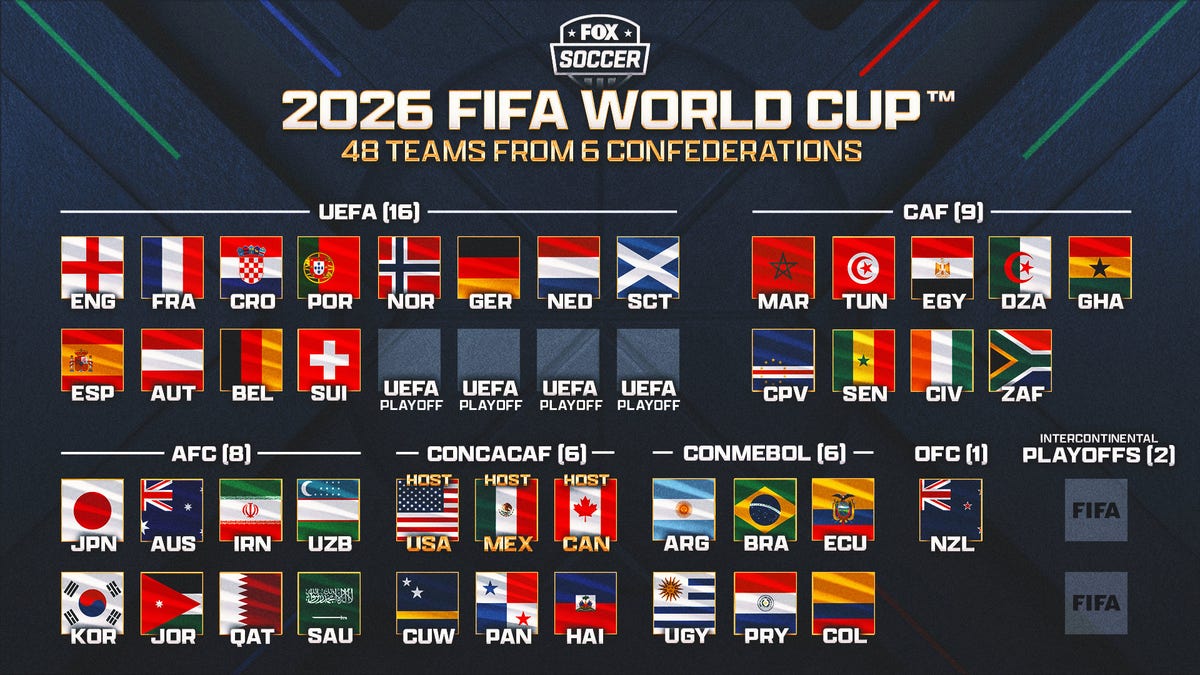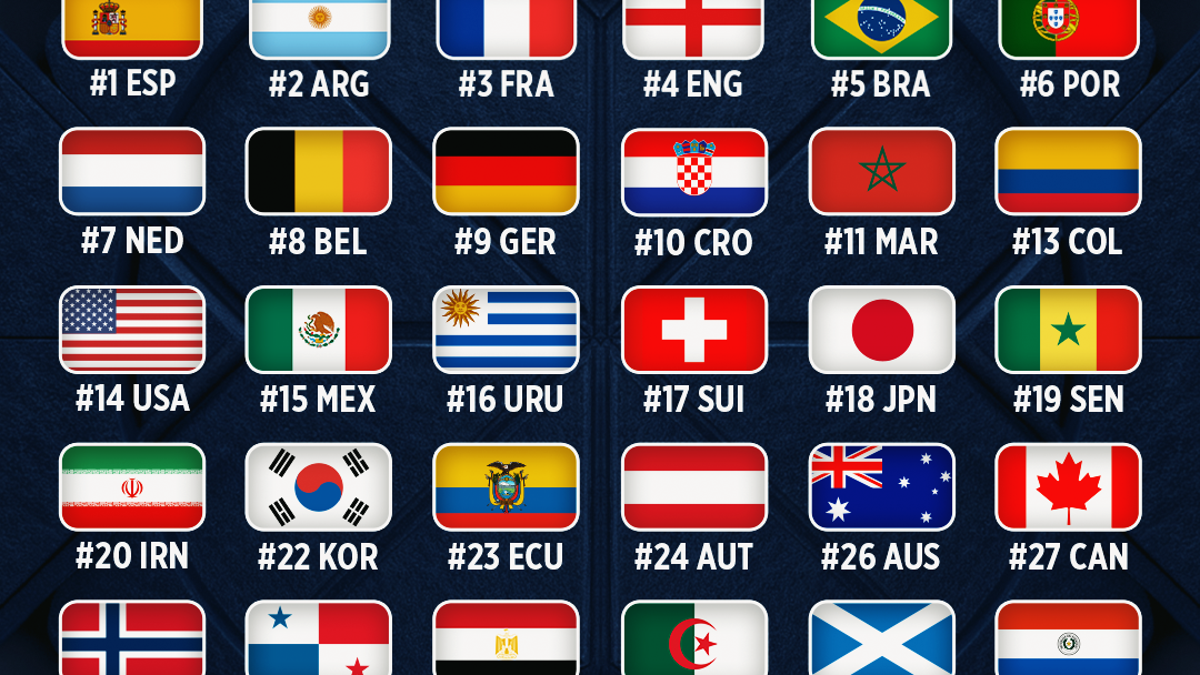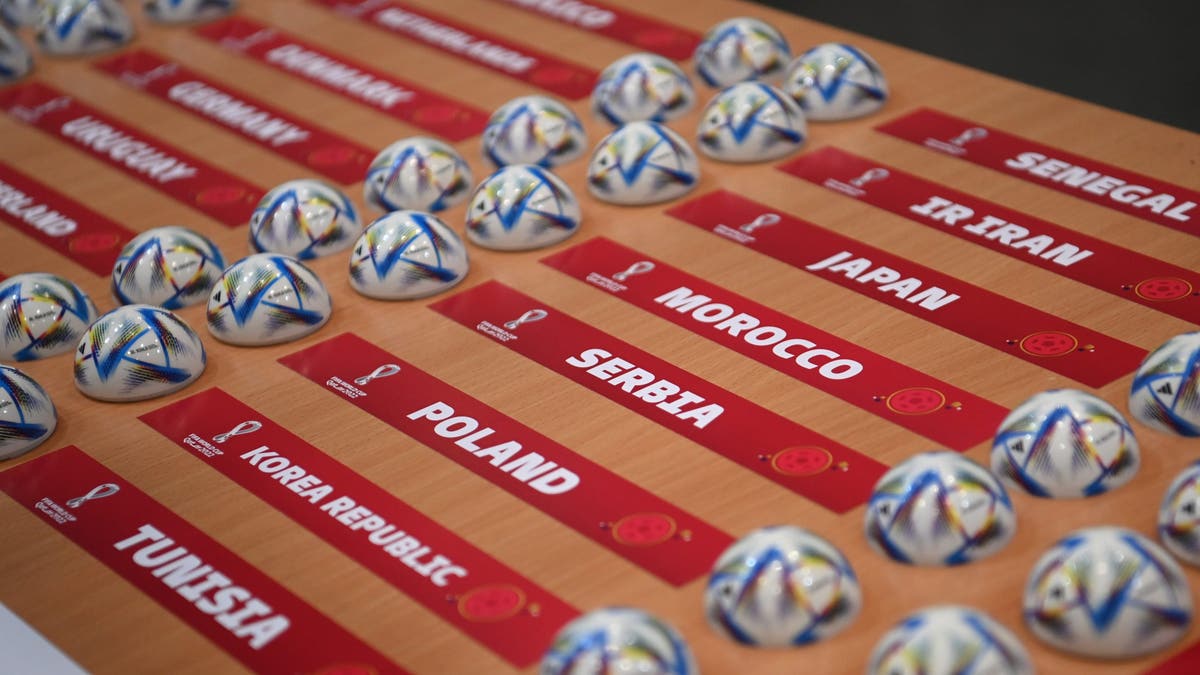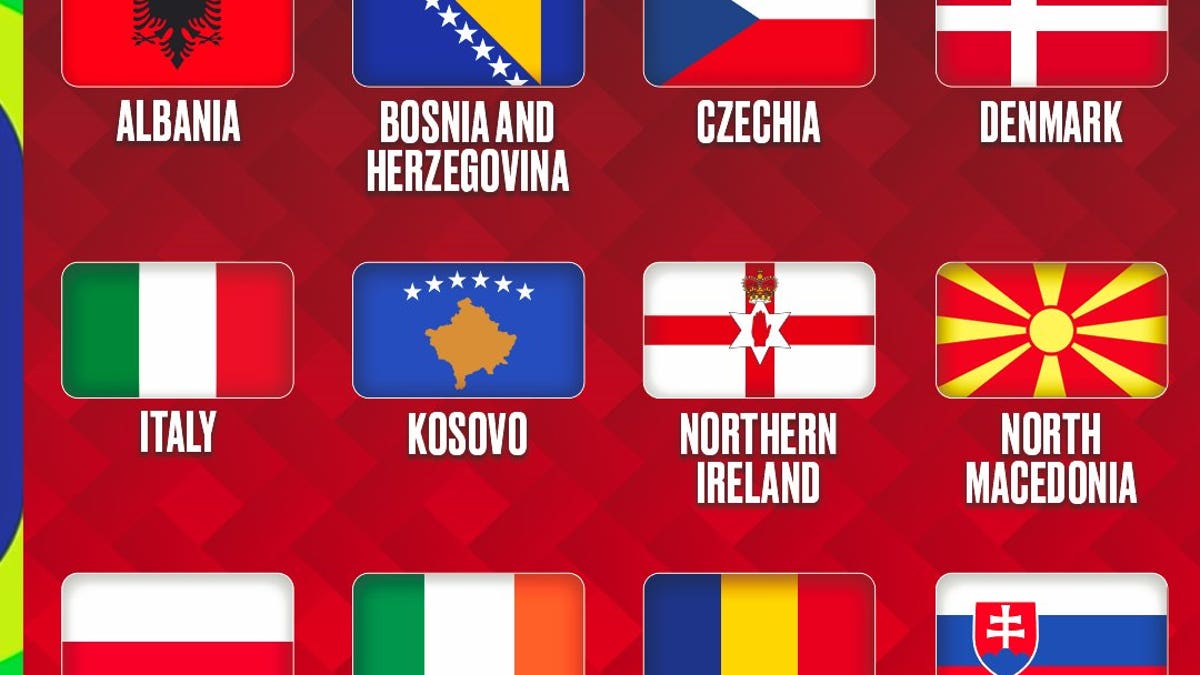
2026 World Cup Group Stage Draw: How to Watch? How Does It Work? What Are Pots?
Published November 25, 2025
Your country has qualified for the 2026 World Cup. You're excited about seeing your nation play with the best of the best. But the biggest question is, how will each team know their opponents?
The biggest edition ever of the world's marquee sporting event is next summer, running from June 11 through July 19, 2026.

We know that 42 of the 48 teams are in. Six more teams will qualify in March 2026. But the next phase will be dividing up all 48 spots into 12 groups of four. From there, it'll be about reaching the knockout stage with an eye on the final on July 19 at MetLife Stadium in East Rutherford, New Jersey.
So let's answer some questions about how the draw will work.
JUMP TO: Time/Date | Pots | Procedure | Co-Hosts | Playoffs?! | Schedule | Qualified Teams
When and Where is the Draw?
The draw will be held at the John F. Kennedy Center for the Performing Arts in Washington, D.C., on Dec. 5 at 12 p.m. ET/9 a.m. PT and will air live on FOX. The draw will be streamed on FOX One, FOXSports.com and the FOX Sports App.

What Are Pots? How Does It Determine Groups?
The 48 participating teams (or qualifying slots) will be placed into "pots" based on criteria such as FIFA rankings and confederation constraints. We already know 42 of those 48 teams ahead of the draw. The other six teams will be known by March 2026.
Each of the four pots will have 12 teams (with placeholders for those six March teams). And each group will therefore have one team from each pot.

The three host nations (Canada, Mexico, and the United States) are already placed into specific groups to ensure their matches occur in their home country.
Teams from the same qualification zone — except for the European confederation (UEFA) — cannot be drawn into the same group. So don't expect two South American teams (CONMEBOL), for example, in the same group. However, you could see up to two UEFA teams in one.
Pot 1
Pot 1 will include the three host nations (United States, Canada, Mexico) plus the nine highest‐ranked qualified teams based on FIFA's rankings, which were released Nov. 19. That list includes Spain, Argentina, France, England, Brazil, Portugal, the Netherlands, Belgium, and Germany.

Pots 2, 3 & 4
With Pot 1 defined, the remaining qualified teams will be distributed in order into Pot 2, Pot 3 and Pot 4 based on their rankings. Each of these pots will also have 12 teams.
When the draw is held on Dec. 5, there will be six placeholders for the teams that will emerge from various playoff rounds across the globe that will be played in March. Two of those spots will come via an intercontinental playoff, and four will come from a playoff round featuring just European teams. We will explain that later.
FIFA announced the pots on Nov. 25, so each of the 12 groups at the World Cup will have one team from each pot.
What is the Draw Procedure? Are There Actual Pots?

Team names during the 2022 World Cup draw in Qatar. (Photo by Michael Regan - FIFA/FIFA via Getty Images)
Each team's name is written on a slip of paper inside a plastic ball and put in large glass bowls (pots) numbered 1 through 4. A representative (often a soccer legend or celebrity) will then draw one ball from each pot, open it up, and call out the country's name.
For pot 1, Canada, Mexico and the USA, as the host countries, will be identified by different colored balls and, when drawn, will be assigned to position A1 for Mexico (green ball), B1 for Canada (red ball) and D1 for the USA (blue ball), as already established per the match schedule released. The remaining nine top-ranked teams in pot 1 will be identified by nine balls of the same color and automatically allocated to the top position of the group into which they are drawn.
FIFA announced that the highest-ranked team (Spain) and the second highest-ranked team (Argentina) will be randomly drawn into opposite sides of the bracket, as well as the third (France) and fourth (England) highest-ranked teams. This will ensure that, should those four teams win their groups, they won't meet until the semifinals.
No group will have more than one team from the same confederation drawn into it, and no group can have more than two European (UEFA) teams drawn into it. All teams will also know who their group-stage opponents are, the schedule of those games as well as the location and stadium.
Are the USA, Canada, and Mexico Already in Groups?
The three co-hosts of the 2026 World Cup are already placed in respective groups, even if we still don't know their opponents. This was done to ensure that the teams would play their group stage matches in their respective countries.
For the USA, the three group-stage games will be on June 12 (in Los Angeles), June 19 (in Seattle), and June 25 (in Los Angeles).
For Canada, the three-group stage games will be on June 12 (in Toronto), June 18 (Vancouver), and June 24 (Vancouver).
For Mexico, the three-group stage games will be on June 11 (in Mexico City), June 18 (Guadalajara), and June 24 (Mexico City).
Group A: Canada, TBD, TBD, TBD
Group B: Mexico, TBD, TBD, TBD
Group D: United States, TBD, TBD, TBD
Group C, along with Groups E through L, have yet to be assigned.
What is the Intercontinental Playoff?
Six teams who didn't directly qualify will participate in a mini-tournament of their own to reach the big stage. This event will take place in March 2026, and will take place in the Mexican cities of Monterrey and Guadalajara. All regions will be represented at this tournament, except Europe (UEFA).
These six teams will be placed in two separate three-team brackets, with the highest ranked teams getting a bye. The two teams to emerge from these brackets will go to the World Cup.
Semifinals — March 26, 2026
New Caledonia vs. Jamaica (in Guadalajara, Mexico)
Bolivia vs. Suriname (in Monterrey, Mexico)
Finals — March 31, 2026
New Caledonia/ Jamaica vs. DR Congo (in Guadalajara, Mexico; winner advances to World Cup)
Bolivia/Suriname vs. Iraq (in Monterrey, Mexico; winner advances to the World Cup)
What is the UEFA Playoff?
As for Europe (UEFA), it will have its own playoff tournament to finalize the last four teams from the region who will go to the World Cup.

Remember, 12 European teams will head directly to the World Cup, having won their respective four-team qualifying groups. The runner-ups of those 12 groups will be joined by four other lower-ranked European teams based on their Nations Leagues standings. These 16 teams will then be bracketed into a mini-tournament of their own to decide those remaining four World Cup spots. All eight semifinals will be played on March 26, 2026, and the four finals on March 31.
Path A
Semifinals – March 26, 2026
Northern Ireland at Italy
Bosnia and Herzegovina at Wales
Final – March 31, 2026
Northern Ireland/Italy at Bosnia and Herzegovia/Wales (winner advances to the World Cup)
Path B
Semifinals – March 26, 2026
Sweden at Ukraine
Albania at Poland
Final – March 31, 2026
Albania/Poland at Sweden/Ukraine (winner advances to the World Cup)
Path C
Semifinals – March 26, 2026
Romania at Turkey
Kosovo at Slovakia
Final – March 31, 2026
Romania/Turkey at Kosovo/Slovakia (winner advances to the World Cup)
Path D
Semifinals – March 26, 2026
North Macedonia at Denmark
Republic of Ireland at Czechia
Final – March 31, 2026
North Macedonia/Denmark at Ireland/Czechia (winner advances to the World Cup)
What is the Schedule for the World Cup?
Which Teams Have Qualified for the World Cup?
Listed by geographical region, with their appearance total including the 2026 World Cup:
Asia (AFC; 8 teams)
- Australia (7 appearances)
- Iran (7 appearances)
- Japan (8 appearances)
- Jordan (will make debut in 2026)
- Qatar (2 appearances)
- South Korea (12 appearances)
- Uzbekistan (will make debut in 2026)
Africa (CAF; 9 teams)
- Algeria (5 appearances)
- Cape Verde (will make debut in 2026)
- Egypt (4 appearances)
- Ghana (5 appearances)
- Ivory Coast (4 appearances)
- Morocco (7 appearances)
- Senegal (4 appearances)
- South Africa (4 appearances)
- Tunisia (7 appearances)
Europe (UEFA; 12 teams)
- Austria (6 appearances)
- Belgium (15 appearances)
- Croatia (6 appearances)
- England (16 appearances)
- France (17 appearances)
- Germany (21 appearances)
- Netherlands (12 appearances)
- Norway (4 appearances)
- Scotland (9 appearances)
- Spain (17 appearances)
- Switzerland (13 appearances)
- Portugal (9 appearances)
North America, Central America, Caribbean (CONCACAF; 6 teams)
- Canada (co-hosts; 3 appearances)
- Mexico (co-hosts; 18 appearances)
- United States (co-hosts; 12 appearances)
- Haiti (2 appearances)
- Curaçao (will make debut in 2026)
- Panama (2 appearances)
South America (CONMEBOL; 6 teams)
- Argentina (19 appearances)
- Brazil (23 appearances)
- Colombia (6 appearances)
- Ecuador (5 appearances)
- Paraguay (8 appearances)
- Uruguay (14 appearances)
Oceania (OFA; 1 team)
- New Zealand (3 appearances)
Want great stories delivered right to your inbox? Create or log in to your FOX Sports account and follow leagues, teams and players to receive a personalized newsletter daily!
https://www.foxnews.com/sports/2026-world-cup-group-stage-draw-when-it-how-works